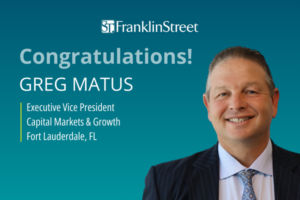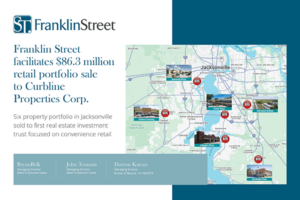Excerpted from Tampa Bay Business Journal story.
The goal of the Tampa Bay Business Journal’s annual Economic Outlook is to deliver the latest information concerning regional, national and global trends now impacting the local economy.
The presenters at the Straz Center for the Performing Arts armed more than 400 Tampa Bay business leaders with the best information available to help them chart a course for a successful year ahead.
Tampa Bay is in the midst of a major transformation with unprecedented growth, startup activity, more venture capital and a more diversified business foundation. That energy is attracting organizations and talent. Synapse, Tampa’s own homegrown innovation conference coming Feb. 11 will bring 6,000 people from the startup community and beyond to attend.
Right now, the wind is at our backs. But what lies ahead for the global and macroeconomy? What will impact the national and international trends that steer Tampa Bay’s growth?
Below is an edited transcript from each of this year’s presenters.
Andrew Wright, CEO and managing partner of Franklin Street
Tampa Bay is one of the greatest places to be from an investment standpoint. When you look at the global economy, the U.S. is far and away the best place to invest money. If you look in the U.S., the Southeast, the population growth, the economic growth means it is one of the best places to be within the U.S., and within the Southeast, Tampa Bay, in my opinion, is at least one of the top three markets.
The story is and will continue to be population growth. While it has slowed, it still is more than two and a half times the national average. And for the Tampa Bay market, it obviously outpaces Florida as well. It does lag some of our other cities in the state, but it is still an impressive number overall.
That continues to be the economic engine that drives our economy, drives our state. And I don’t see that slowing down. Zooming in on the Tampa Bay area, where is that growth coming? I’m not an economist, I’m a real estate guy. So a lot of the stuff is not about specific numbers for me. It’s more about trends and understanding where we’re headed.
Through 2023, the majority of the population is in the outskirts of Tampa, more in the suburban areas. It’s because it’s less developed. So if you live in Pinellas County, it’s already fully developed and it’s waterlocked. Very hard to have more densification there.
The same thing in the urban cores of Tampa, although it is changing. You do see that in downtown development. But the majority of the growth is happening in West Hillsborough and into Pasco County. On household formation, population is part of it. But most of you, we don’t have one household to one person.
Household formations are also a very important thing that I don’t think gets talked about enough. This follows that same trend that the household formations are coming in some of the outlying areas, which again hits transportation aspects.
Getting into unemployment locally: We are very strong, as well as nationally. We’ll continue to be. I think if you start talking about subsets, it’s even tighter.
If someone’s looking for a good accountant, staff accountant, comptroller, that market is extremely tight. If we’re looking for tech people, code writers, here in this area, it is extremely tight. So within those specializations, talent will continue to be a challenge for us, attracting them to the region, but I think we’re headed in a good direction.
Our economy is thriving. Our GDP growth in the Tampa Bay area is almost 6 percent. We don’t have the new numbers. We’ll get them here in about 30 days. But looking at where we are compared to the rest of the country, it has slowed down. It has not slowed down here. And 6 percent is a massive number. GDP is really a broad understanding of economic output and if the population stays flat, and economic output grows, then your per capita available economic distribution, people become wealthier.
How do you erode that? Through inflation. So if you grow, everything costs more, and the population has to spread out to get to more people.
We are growing here faster than in other places, even accounting for the population growth and inflation. So that means people should be feeling wealthier on a per capita basis.
Unfortunately, there’s not an equal distribution. And it’s a good thing this is happening, because we are way behind. When you look at where we are on a per capita GDP across the country, we are in the bottom. If you think about how we stack up against our other large populated states, California, Texas, New York, we are way behind.
That’s been a problem for us for a long time. Low wages, low quality of jobs, low-skilled workforce base historically. But those things are starting to change. Household income is outpacing the national average. We are outpacing the areas here locally. Hillsborough is ahead, Pasco is catching up, and we are still way behind the nation.
When you look about how we’re doing in terms of rates, the U.S. has been steadily declining in its percentage growth on median income year over year. But guess who has not? Locally, we are continuing to see strength in our economy, wealth creation, and the direction that we’re headed. I think we will continue to see that trend.
There are some headwinds, but as an overall statement, people in Tampa Bay are getting wealthier and we’re able to afford more, and the quality of our economy is very strong. Particularly when you compare it to the U.S., and also particularly when you compare it to concepts that we’re focused on. It’s a very well-spread increase of household income. It’s not centralized into the high ZIP codes. Some of the largest growth of household incomes is in some of the rural areas. That is really a reflection of population growth, people coming in with higher skills.
The cost of housing is a concern. But in Tampa, that’s not the same story. I think that’s positive. You look at the bubble that was created in the run-up prior to the recession and where we are now, if you were to take a long-term average, we’re right in line with what our long-term health average in terms of growth is. Tampa home price index is higher than the national average. So, think about that.
For full story, visit
https://www.bizjournals.com/tampabay/news/2020/01/17/cautious-optimism-driven-by-population-growth.html



